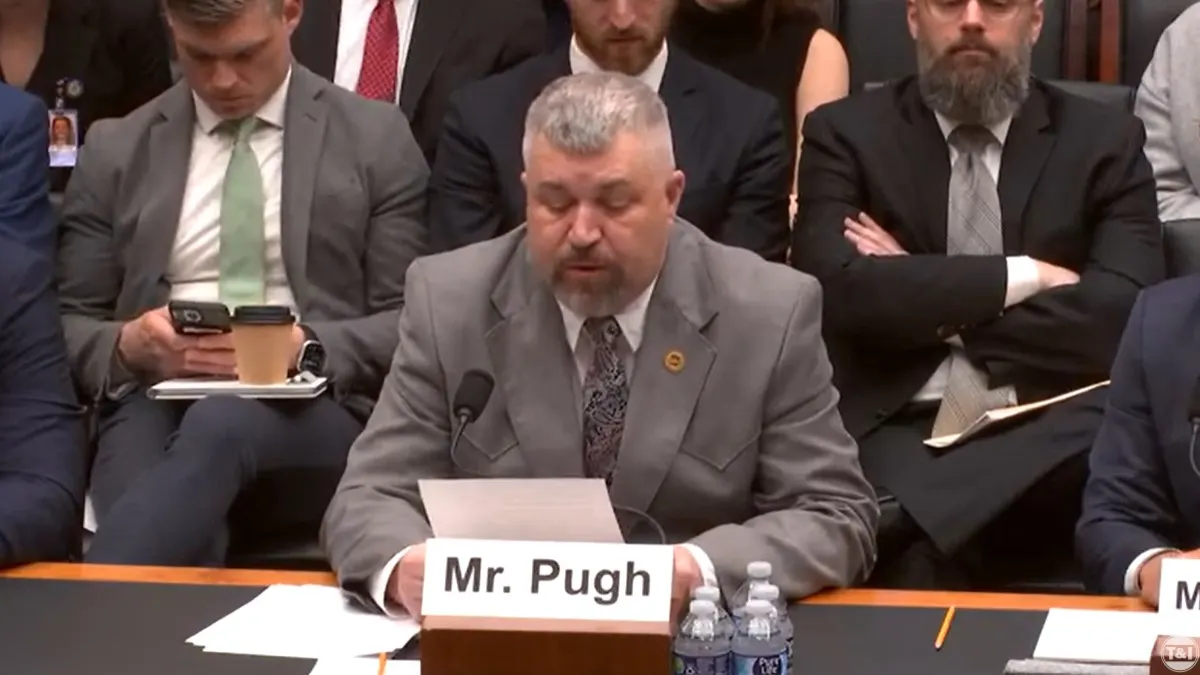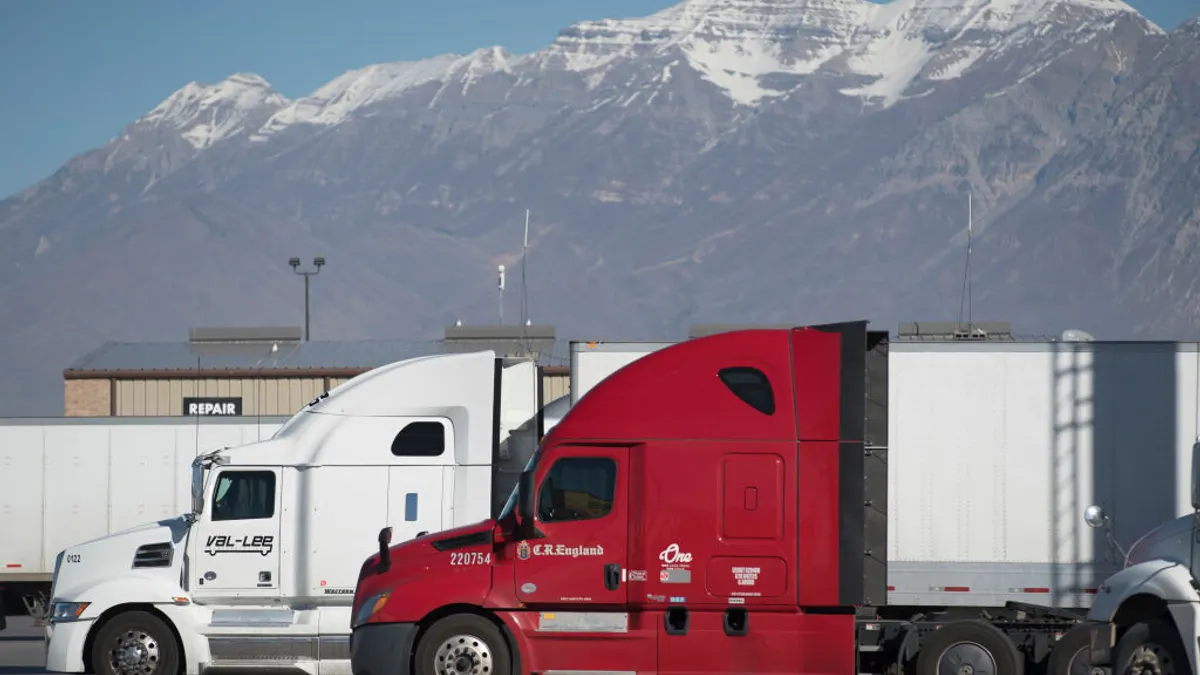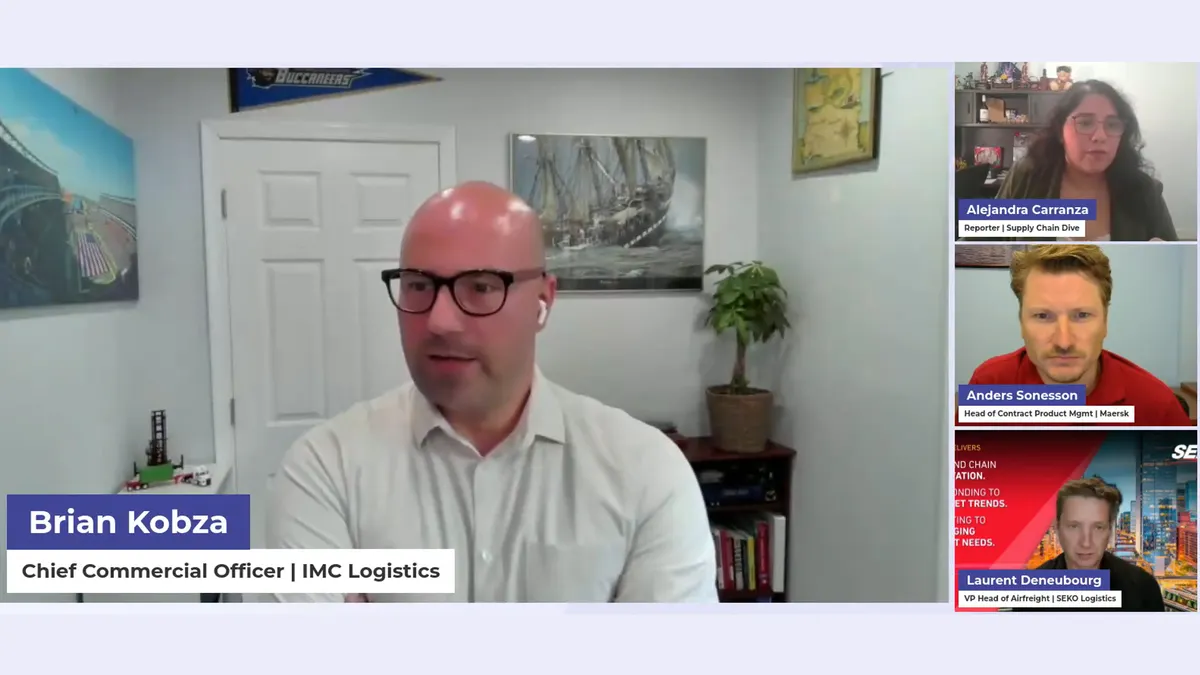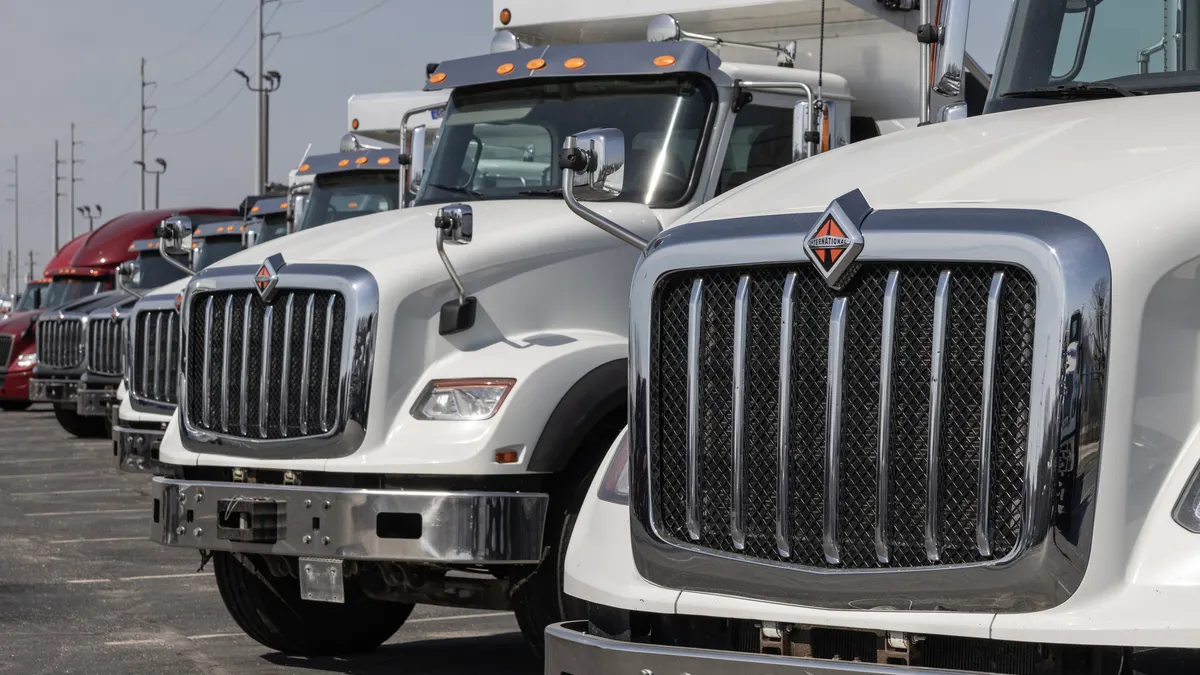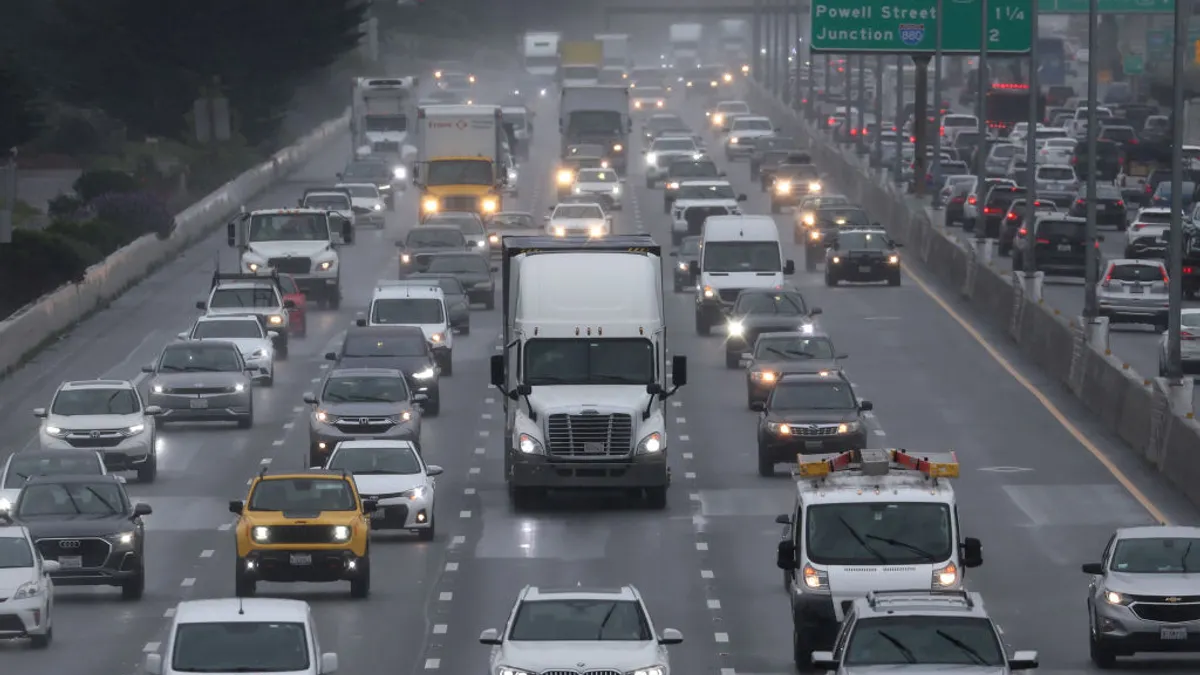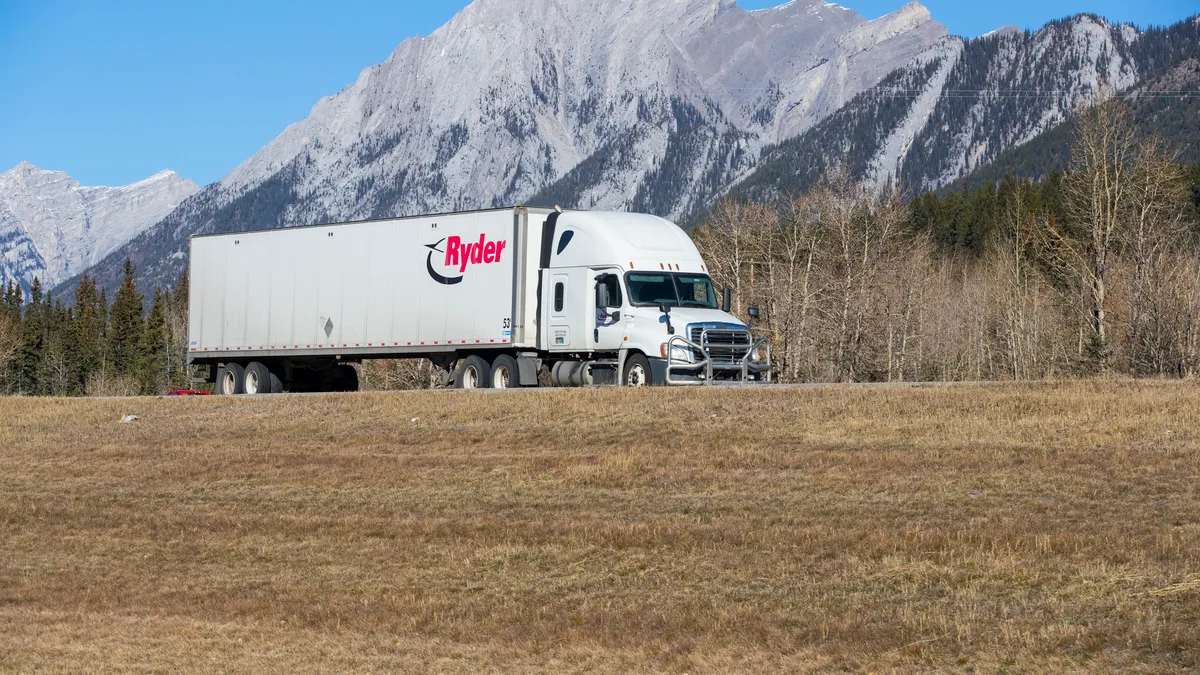Several trucking industry stakeholders voiced issues that are most prevalent in the industry, as members of Congress work on a multi-year surface transportation bill.
The Truckload Carriers Association, Owner-Operator Independent Drivers Association and the International Brotherhood of Teamsters were among those who spoke on several key matters pertaining to the efficient movement of goods and safety for truckers during a Subcommittee on Highways and Transit hearing on March 26.
Representatives from the organizations touched on secure parking for truckers, the driver shortage and whether to increase weight limits for trucks on highways.
Truckers face lack of safe parking
The lack of secure parking is an issue still impacting truckers today, John Elliott, executive chairman at Load One and past chairman of the Truckload Carriers Association, said during the hearing. He noted that, currently, about one parking spot exists for every 11 drivers.
“As this committee examines the shortcomings of what the [Infrastructure Investment and Jobs Act] lacked upon its introduction in 2021, we can look no further than the lack of funding to create safer and secure truck parking for our drivers today,” Elliott said.
Congress has tried to fix the issue through the Truck Parking Safety Improvement Act, which was first introduced in 2022. The bill sought to help truck parking capacity catch up with the growing number of trucks on the road in recent years.
Elliott commended U.S. Rep. Mike Bost, R-Ill. for his efforts to increase truck parking spaces across the country by reintroducing the act in March 2023. If passed, the still-under-review bill would provide “more opportunities for places to rest when these drivers are trying to comply with federal hours of service rules,” Elliott added.
In addition, more than 900 truck parking spots were to be built in Florida as part of the Bipartisan Infrastructure Law, according to a Transportation Department notice from January 2024. Through the legislation, Florida was set to receive $180 million in grant money as part of the Infrastructure for Rebuilding America program.
Most recently, Charlotte, North Carolina, announced it is offering a mobile application to help truck drivers find safe and authorized parking.
Increased truck weights: efficiency or safety risk?
During the hearing, witnesses voiced opposing views on what Congress should do in terms of current weight limits for trucks on the highway. Stakeholders have differing opinions on what an increase to weight limits would do to road infrastructure and safety for drivers.
“Congress should authorize a pilot program to modestly increase the gross vehicle weight limit on interstates from the current 80,000 pound limit up to 91,000 pounds while adding a sixth axle or the bridge formula, whichever is lower,” said Ryan Lindsey, EVP of government relations at CRH, a wholesale provider of building materials.
Lindsey noted that many trucks are only three-quarters full due to current weight restrictions.
"With an increase in [gross vehicle weight], we would see these trucks fill closer to capacity, meaning fewer vehicles on the road, fewer trips to accomplish the same task and ultimately fewer miles in the system,” he said.
But not all stakeholders feel the same way, instead deeming an increase in truck weight limits as a safety threat.
“The Teamsters adamantly oppose efforts to raise maximum truck weight. Simply put, these proposals threaten safety, increase wear and tear on our nation's roads and add unnecessarily operational difficulties for our drivers,” said Cole Scandaglia, senior legislative representative and policy advisor at the International Brotherhood of Teamsters.
Scandaglia said putting its members behind the wheels of heavier vehicles is “simply putting them and members of [the] public in harm's way.”
The sustainability of the Highway Trust Fund
The best way to maintain the Highway Trust Fund continues to be unclear among stakeholders.
“The fund faces long-term sustainability challenges,” Dan Glessing, president of the Minnesota Farm Bureau Federation, said during the hearing.
The fund’s structure has changed several times since it was enacted in 1956, according to the Federal Highway Administration. Federal fuel taxes, other federal taxes on truck users and interest on invested balances provide income to the fund, which pays for road and bridge maintenance and repairs.
With more electric vehicles on the road, which don’t contribute to fuel taxes, the long-term stability of the Highway Trust Fund is in question. To address these issues, the Transportation and Infrastructure Committee approved a budget reconciliation proposal on April 30 that would ensure EVs pay for the use of the nation's highways. Under the proposal, an annual registration fee of $250 will apply on EVs, with the fee for hybrids remaining at $100.
“Farm Bureau supports increasing Highway Trust Fund fees to reflect the advancements in fuel efficiency and rising inflation. We also advocate for ensuring that all road users, regardless of fuel source, contribute fairly to the fund's revenue,” Glessing said.
Is there a driver shortage?
Groups such as the Owner-Operator Independent Drivers Association say the driver shortage is a myth, while others disagree. The American Trucking Associations estimates the industry was short 60,000 drivers or fewer as recently as 2023. While it’s still a shortage, it’s down from a record 81,258 in 2021.
"I can tell you firsthand that the driver shortage is real," Lindsey from CRH said.
At the time of the hearing, Lindsey said CRH needed to hire another 1,000 truckers just to maintain current demand.
Lewie Pugh, EVP of the OOIDA, argues that large motor carriers have long peddled a driver shortage to promote policies that allow the hire of cheap labor in order to maximize profits.
“Continued acceptance of the widely debunked driver shortage myth has unfortunately convinced many of you that diluting credential standards, resisting enhanced driver training, lowering ages of CDL requirements and bringing in more cheap foreign drivers is somehow good for trucking,” Pugh said.



